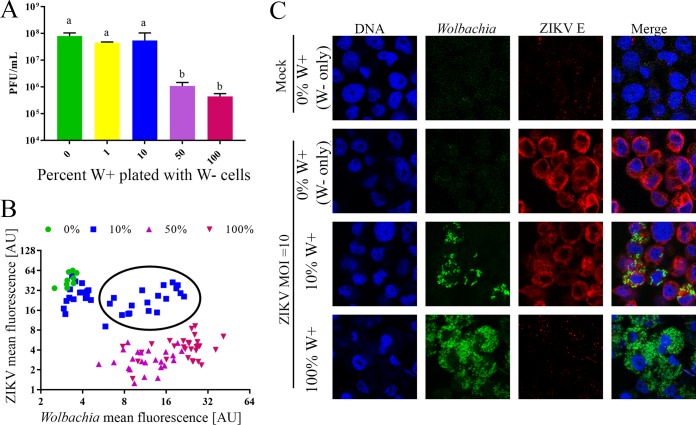FIG 2 .
wStri inhibition of ZIKV is overcome at low Wolbachia infection frequencies. Wolbachia-free (W−) cells were plated with varying quantities of Wolbachia wStri-infected A. albopictus cells (W+) and incubated for 24 h to allow adherence. Cells were infected with ZIKV PRVABC59 at an MOI of 10 and incubated for 3 days. (A) Cell supernatant was collected and the viral titer was determined in a plaque-forming assay. The data shown are means and standard deviations of results from three independent experiments. Statistical differences in infectious virus were assessed by a one-way ANOVA followed by Tukey’s test for multiple comparisons. Conditions labeled “a” were statistically different from those labeled “b.” *, P < 0.05. (B and C) Cells were fixed and fluorescent in situ hybridization to the 16S ribosomal RNA gene was used to detect Wolbachia (green), and flavivirus envelope antibody (D11C) was used to detect ZIKV (red). Cells were counterstained with DAPI to indicate DNA (blue). Wolbachia and ZIKV concentrations per cell were calculated for each plating ratio by using ImageJ. Relative quantities of ZIKV and Wolbachia are shown in panel B. Each point is an individual cell. Representative images are shown in panel C. Parts of panel C were reproduced from reference 71, with permission.

